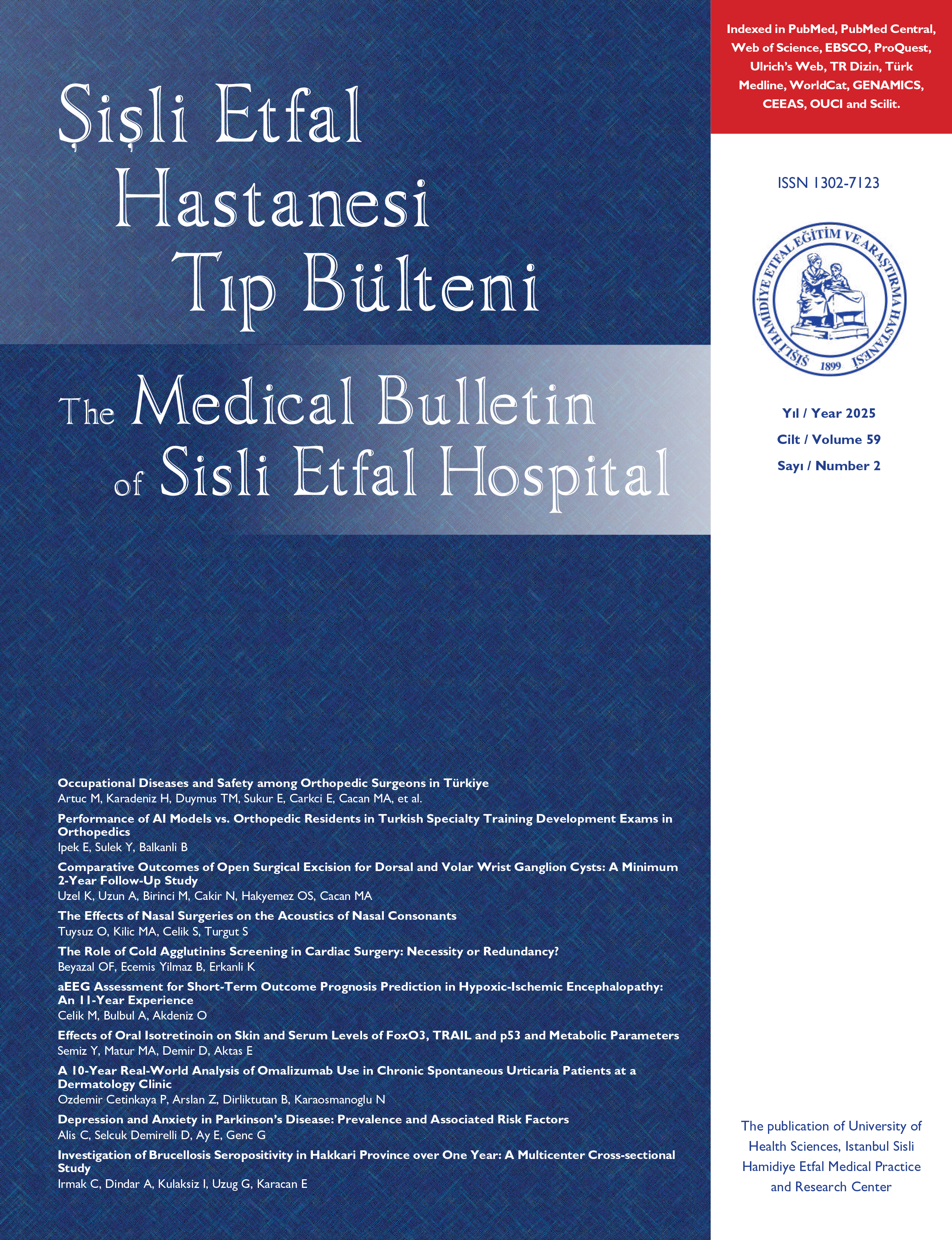
Geriatrik kalça kırıklı hastalar için yoğun bakım ünitesi gerekli mi?
Muharrem Kanar, Raffi Armağan, Yunus Oç, Mehmet Ali Talmaç, Osman Tuğrul ErenŞişli Hamidiye Etfal Eğitim ve Araştırma Hastanesi, Ortopedi ve Travmatoloji Anabilim Dalı, İstanbul - TürkiyeAmaç: Beklenen yaşam sürelerininin artışı ile ileri yaşlarda görülen hastalıkların da sıklığı artmaktadır. Sıklıkla basit düşmeler sonucu görülen kalça kırıkları ilerleyen yaş gruplarında belirgin ölçüde daha yaygındır. Bu çalışmada 65 yaş üstü proksimal femur kırıklı hastaların postoperatif yoğun bakım üniteleri ve ortopedi klinklerinde yatışlarının sonuçlarını değerlendirmeyi amaçladık.
Gereç Yöntem: Çalışmamıza 2010-2015 tarihleri arasında ortopedi ve travmatoloji kliniklerimizde opere edilen ileri yaş (65 üzeri), ASA skoru 3 olan proksimal femur kırıklı ve hastane kayıtlarından ulaşılabilen 118 hasta dahil edilmiştir. Hastaların postoperatif erken dönem (0-30 gün) mortalitelerinin değerlendirlmesi amaçlanmıştır. Hastalar postoperatif dönemde nereye başvurduklarına göre iki gruba ayrıldı.
Bulgular: ASA skoru 3 olan 118 proksimal femur kırıklı 65 yaş üstü hasta, postoperatif yoğun bakım ünitesinde ve ortopedi kliniklerinde yatan hastalar iki grup olarak değerlendirildi. Bu iki grup hastanın erken postoperatif dönem mortaliteleri arasında anlamlı fark saptanmadı.
Sonuç: Preop iyi değerlendirilen ASA 3, 65 yaş üstü, proksimal femur kırıklı hastanın, postop yoğun bakım gereklilikleri ihtimaline karşı uzun süre bekletilmeden opere edilmeleri, preop bekleme sürelerinin uzaması sonucu oluşan komplikasyonları minimale indirebilir.
Anahtar Kelimeler: Geriatrik, kalça kırığı, yoğun bakım.
Is intensive care unit necessary for geriatric hip fractures?
Muharrem Kanar, Raffi Armağan, Yunus Oç, Mehmet Ali Talmaç, Osman Tuğrul ErenŞişli Hamidiye Etfal Eğitim ve Araştırma Hastanesi, Ortopedi ve Travmatoloji Anabilim Dalı, İstanbul - TürkiyeObjective: As life expectancy increases, so does the prevalence of diseases observed in the elderly. Hip fractures that usually occur with simple falls are profoundly more common in the elderly population. In the present study, we aimed to examine the outcomes of patients with proximal femoral fractures aged >65 years who admitted to post-operative intensive care units and orthopaedic clinics.
Materials and Method: The study included 118 elderly patients (aged >65 years) who were available from medical records of hospital archives, with proximal femoral fractures who were surgically treated between 2010 and 2015 in our orthopaedic and traumatology clinics, with American Society of Anesthesiologists (ASA) 3 scores. Our aim was to evaluate the mortality rate during the early postoperative period (30 days). Patients were categorised into two groups based on where they were admitted to during the postoperative period.
Results: A total of patients over 65 years of age with 118 proximal femur fractures with an ASA score of 3 were evaluated in two groups; in the postoperative intensive care unit and in orthopaedic clinics. There was no significant difference between the two groups in terms of mortality rate during the early postoperative period.
Conclusion: For patients with proximal femoral fractures aged >65 years with an ASA score of 3 and who are thoroughly evaluated preoperatively, complications that may develop as a result of delays in the time-to-surgery, caused by postoperative intensive care requirements may be reduced by performing the surgery without delay
Keywords: Fracture, geriatric, hip, intensive care.
Makale Dili: Türkçe



















